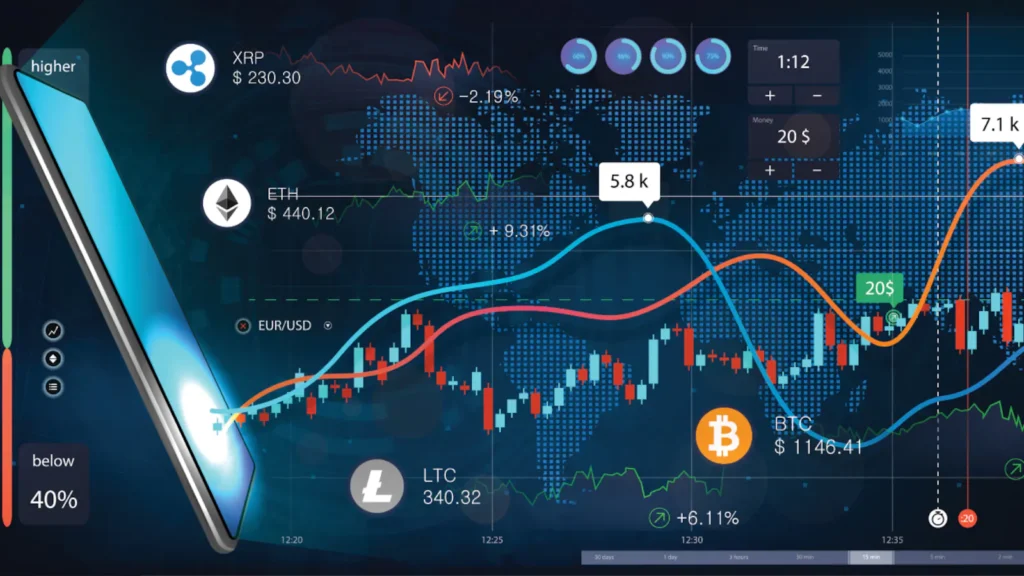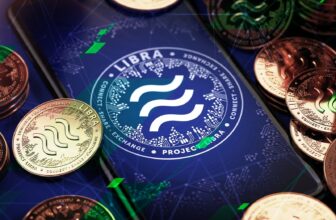
Cryptocurrency trading, the art of buying, selling, or exchanging cryptocurrencies, has revolutionized the investment landscape. Unlike traditional markets, the crypto market operates 24/7, offering endless opportunities. Potential benefits include diversifying investment portfolios, high liquidity, and the potential for significant returns. On the flip side, its nascent nature brings volatility, regulatory uncertainties, and a steeper learning curve for beginners.
Cryptocurrency is a fusion of ‘cryptography’ and ‘currency.’ It’s a digital or virtual asset used as a medium of exchange. Unlike fiat money, it’s not issued or regulated by any central authority, ensuring freedom from government interference. Bitcoin, the pioneer, introduced the world to this decentralized paradigm.
Blockchain, the underlying technology of cryptocurrencies, is a continuous chain of blocks (sets of transactions) secured by cryptography. The decentralized nature of blockchain ensures that no single entity has control, making transactions transparent and immutable. This decentralized system reduces the risk of fraud, making it attractive for various applications beyond just currency.
Table of Contents
Selecting a Reliable Exchange

Source: academy.binance.com
Imagine walking into an unreliable bank or using an insecure online shopping website. The risks would be enormous! The same applies to cryptocurrency exchanges. Key factors in choosing an exchange include:
- Security: Has the exchange been hacked before? What security measures are in place?
- Fees: Every transaction, deposit, or withdrawal might come with fees. Compare these across exchanges.
- Supported Currencies: Does the exchange support the cryptocurrencies you’re interested in?
- User Interface: Especially for beginners, an intuitive interface can be a game-changer.
- Customer Support: Ensure there’s responsive support to address potential concerns.
Creating Your Wallet
Think of a crypto wallet as your personal interface to the blockchain, similar to how a bank account is your access point to the traditional financial system. Here’s a step-by-step guide:
Decide on a Wallet Type:
- Hardware Wallets: Physical devices storing your private keys offline. Best for significant amounts.
- Software Wallets: Applications downloaded on a device. Divided into desktop, mobile, and web wallets.
- Paper Wallets: Physical documents containing your private and public keys.
Set Up and Security: For software wallets:
- Download from the official site or app store.
- Set a strong, unique password.
- Always backup your wallet, noting down the seed phrase in a secure location.
- Receiving and Sending Funds: Every wallet provides an address – a string of numbers and letters. Use this to send or receive cryptocurrencies.
Basic Trading Strategies

Source: cnbc.com
Diving into the crypto market without a plan is like sailing a ship without a compass. Here are some foundational strategies you can apply on bitsoftware360.com:
HODLing: An intentional misspell of ‘hold,’ this strategy involves purchasing a cryptocurrency and holding onto it for the long term, irrespective of price volatility. It’s based on the belief that despite short-term market fluctuations, the price will increase over a longer period.
Day Trading: This is the polar opposite of HODLing. Day traders aim to capitalize on short-term price movements by buying and selling within the same trading day. It requires a keen understanding of the market and is more time-intensive.
Swing Trading: This method involves taking advantage of ‘swings’ or perceived cyclical trends in the market. Traders buy during periods of perceived undervaluation and sell when the asset is seen as overvalued.
Market Analysis Tools
To navigate the turbulent waters of the crypto market, arm yourself with the right tools:
Technical Analysis (TA): TA involves analyzing price charts and employing statistical measures to predict future price actions. Tools like candlestick charts, volume indicators, and moving averages are integral to this.
Fundamental Analysis (FA): FA is about evaluating a cryptocurrency’s intrinsic value. This involves understanding the broader market trends, technological advancements, regulatory news, and any other external factors that could influence the price.
Risk Management
Crypto’s volatility isn’t for the faint of heart. Protecting your investment requires:
Stop-loss Orders: Setting an automatic sell order at a particular price can prevent massive losses during sharp market downturns.
Diversification: Don’t put all your eggs in one basket. Splitting your investment across different assets can offset potential losses.
Security Measures

Source: forbes.com
The world of cryptocurrency, while groundbreaking, is still part of the broader digital ecosystem, making it a potential target for various cyber threats:
Hardware Wallets: Often revered as the gold standard in cryptocurrency security, these tangible devices are specifically designed to house your private keys in an offline environment. By ensuring they’re inaccessible via the internet, hardware wallets significantly reduce the vulnerability of your assets to cyber-attacks.
Two-factor Authentication (2FA): A crucial security layer, 2FA requires two distinct forms of identification before granting account access. By enabling 2FA, you substantially minimize the risks associated with compromised passwords, enhancing overall account safety.
Phishing Awareness: The crypto space isn’t immune to phishing attacks. These deceptive attempts, often through seemingly legitimate emails or websites, aim to steal sensitive information. It’s paramount to approach unsolicited communication with skepticism, verifying URLs meticulously, and never divulging personal or financial details impulsively.
Crypto Taxation
Cryptocurrencies, despite their decentralized nature, have caught the attention of tax authorities worldwide:
Record Keeping: Organized documentation is not just a good practice but essential in the realm of crypto. Ensure you maintain a meticulous record of all transactions, capturing details like dates, specific amounts, and associated parties. These records will be invaluable for accurate tax calculations and potential audits.
Capital Gains: When you sell a cryptocurrency asset at a price higher than your purchase value, it typically translates into capital gains. Most tax jurisdictions will require you to report these gains. The precise tax rate and how it’s applied can differ, depending on factors like where you reside and how long you’ve held the asset.
Staying Informed
In the ever-evolving landscape of cryptocurrency, knowledge remains your most valuable asset:
News Sources: Established crypto news platforms, including CoinDesk, CoinTelegraph, and The Block, consistently deliver timely and accurate updates. These outlets can be your frontline sources for market movements, regulatory changes, and emerging trends.
Forums and Social Media: Communities like Reddit’s r/cryptocurrency or the myriad of crypto influencers on Twitter offer a rich tapestry of insights, discussions, and forecasts. However, the decentralized nature of these platforms means information can sometimes be subjective or biased. Always cross-check and verify before making decisions based on social media insights.
Avoiding Common Mistakes

Source: europeanbusinessreview.com
Crypto trading is riddled with pitfalls, but a discerning trader can navigate these challenges:
Emotional Trading: Cryptocurrencies can be incredibly volatile. This volatility often triggers emotional responses, from the euphoria of a bull run to the despair during market crashes. Allowing emotions like fear or greed to drive your trading decisions is a recipe for disaster. Approach trading with a clear strategy and rational mindset.
Lack of Research: The acronym DYOR, or Do Your Own Research, has become a mantra in the crypto community. With numerous projects, coins, and tokens emerging daily, thorough research is crucial to separate genuine opportunities from potential scams or underperformers.
Ignoring Fees: In the excitement of trading, it’s easy to overlook the incremental costs. Transaction fees, withdrawal fees, or even network fees, though they might seem negligible individually, can accumulate rapidly, chipping away at your overall profitability. Always factor in these costs when strategizing your trades.
Conclusion and Next Steps
Crypto trading is a journey of continuous learning and adaptation. The volatile nature of the market promises high rewards but comes with inherent risks. Equip yourself with knowledge, implement robust security measures, and stay updated. As you embark on this thrilling venture, remember the golden rule: only invest what you can afford to lose.







